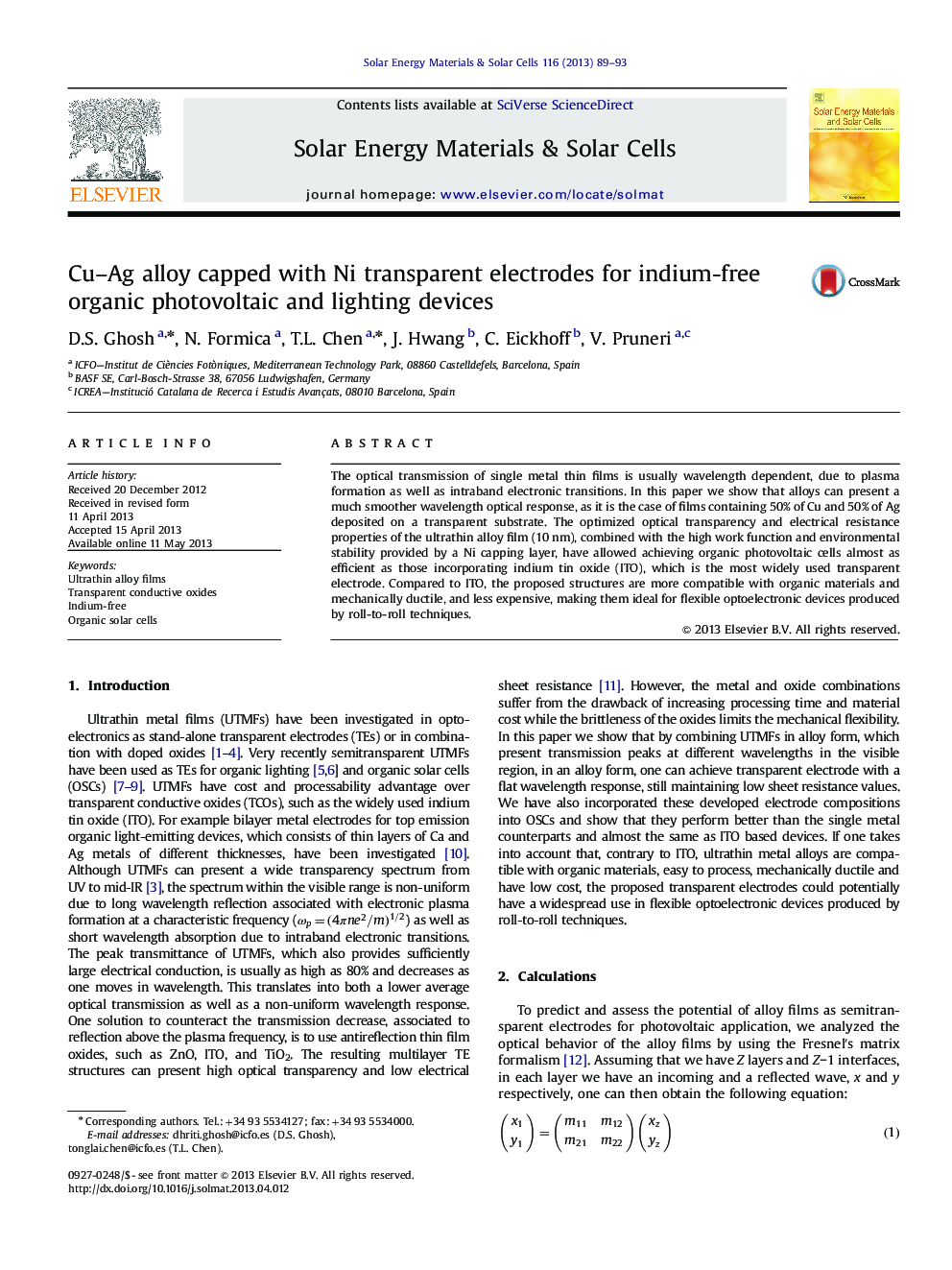| Article ID | Journal | Published Year | Pages | File Type |
|---|---|---|---|---|
| 6536242 | Solar Energy Materials and Solar Cells | 2013 | 5 Pages |
Abstract
The optical transmission of single metal thin films is usually wavelength dependent, due to plasma formation as well as intraband electronic transitions. In this paper we show that alloys can present a much smoother wavelength optical response, as it is the case of films containing 50% of Cu and 50% of Ag deposited on a transparent substrate. The optimized optical transparency and electrical resistance properties of the ultrathin alloy film (10Â nm), combined with the high work function and environmental stability provided by a Ni capping layer, have allowed achieving organic photovoltaic cells almost as efficient as those incorporating indium tin oxide (ITO), which is the most widely used transparent electrode. Compared to ITO, the proposed structures are more compatible with organic materials and mechanically ductile, and less expensive, making them ideal for flexible optoelectronic devices produced by roll-to-roll techniques.
Related Topics
Physical Sciences and Engineering
Chemical Engineering
Catalysis
Authors
D.S. Ghosh, N. Formica, T.L. Chen, J. Hwang, C. Eickhoff, V. Pruneri,
